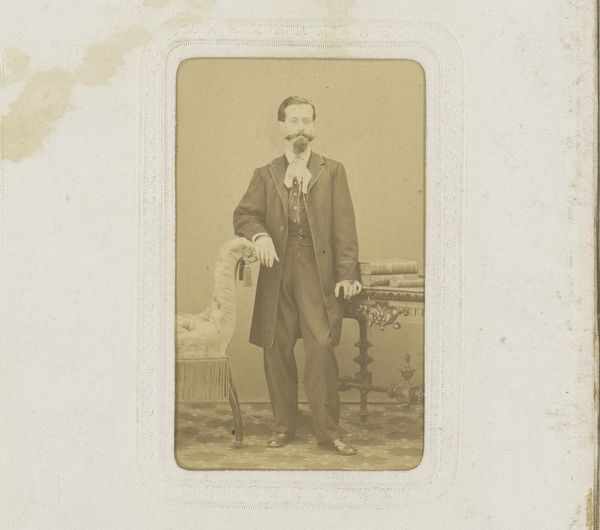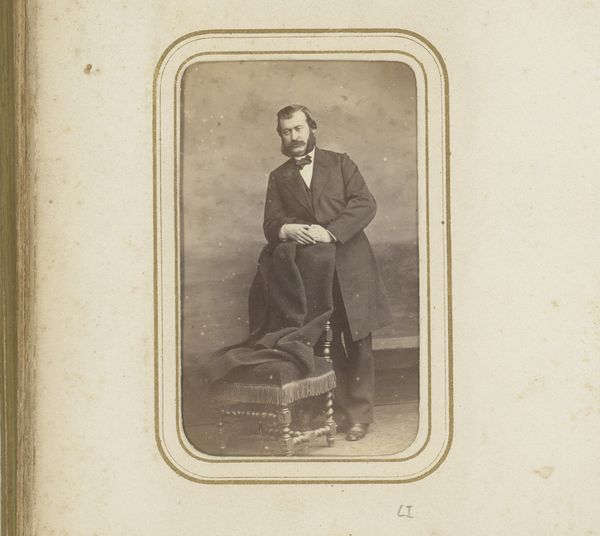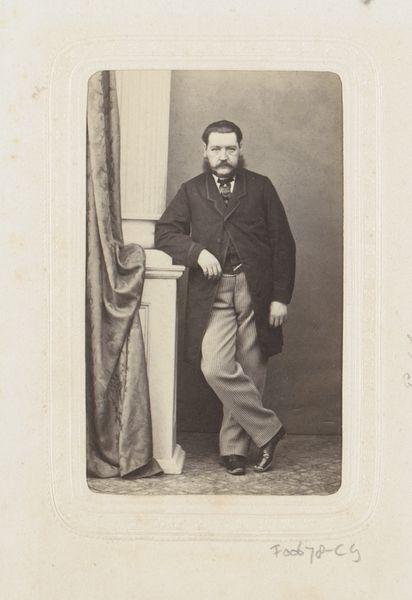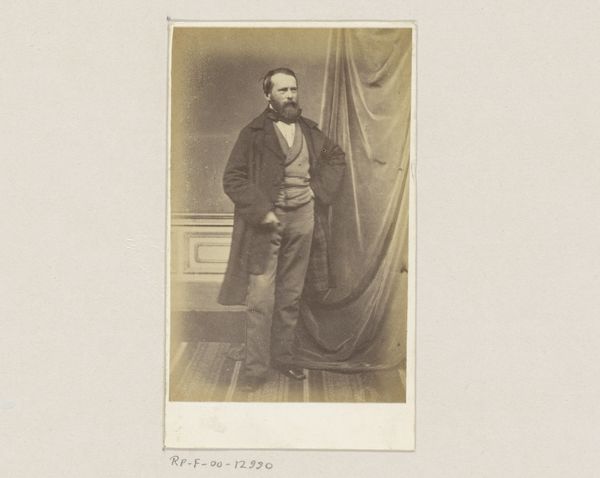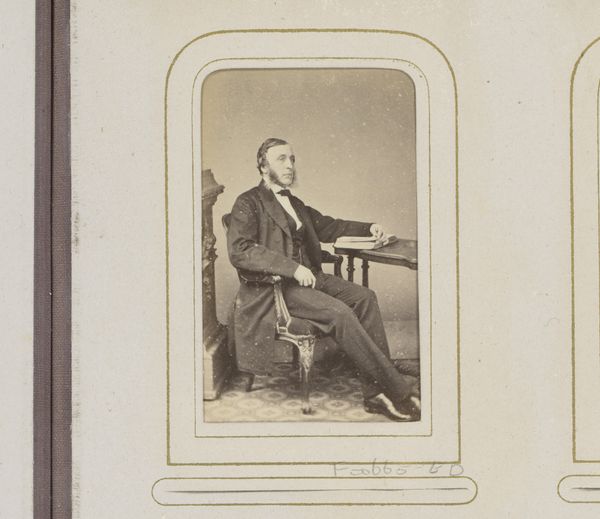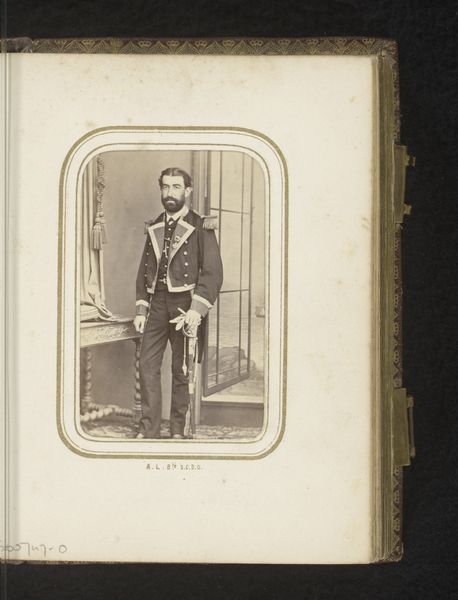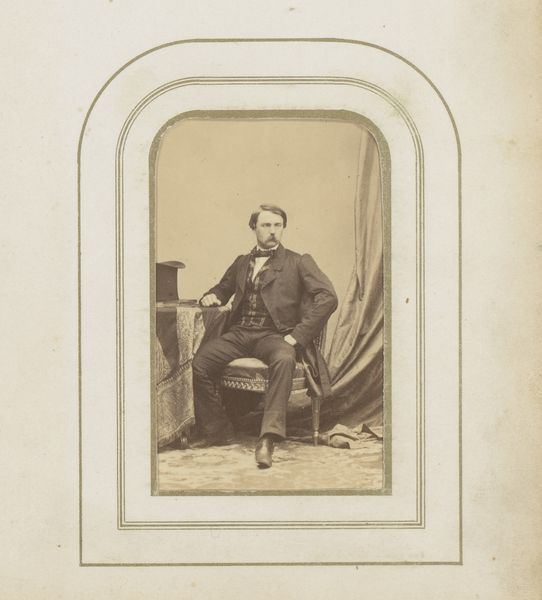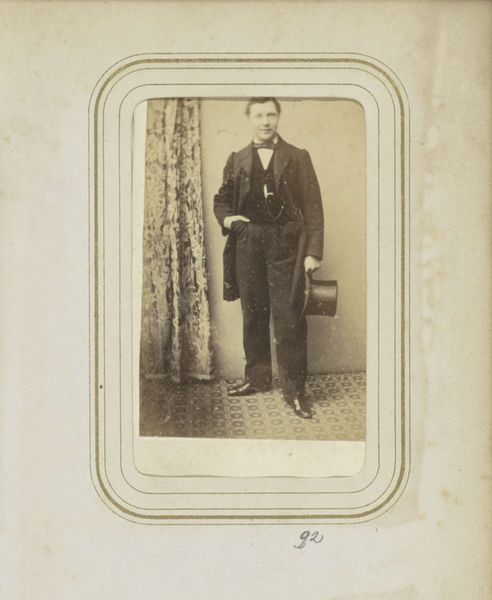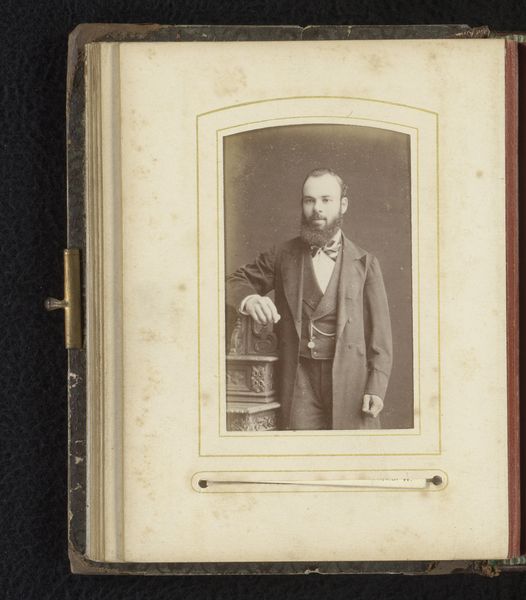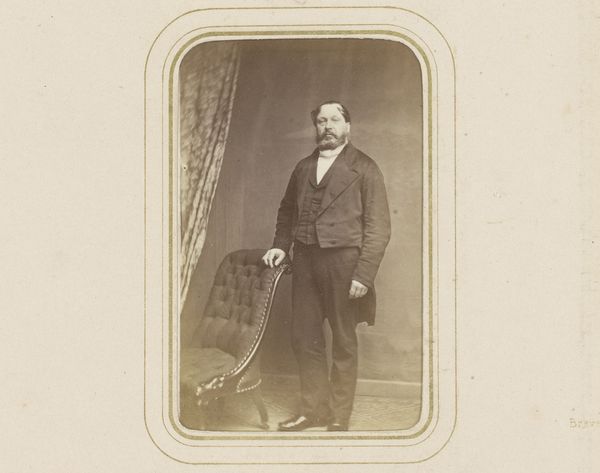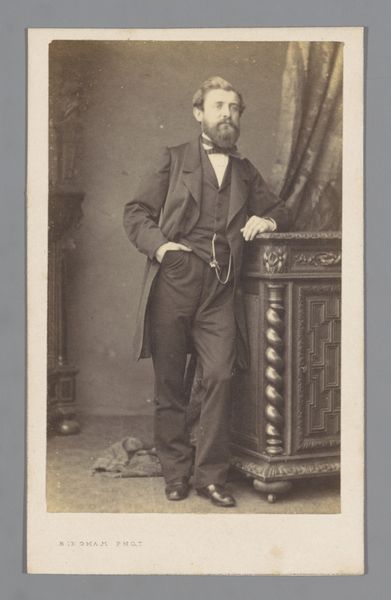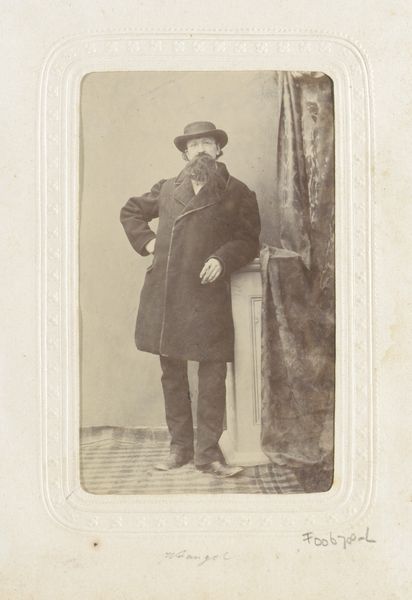
#
table
#
aged paper
#
toned paper
#
muted colour palette
#
ink paper printed
#
charcoal drawing
#
charcoal art
#
underpainting
#
19th century
#
watercolour illustration
#
watercolor
Dimensions: height 87 mm, width 53 mm
Copyright: Rijks Museum: Open Domain
Editor: This is “Portret van een man met zakhorloge, staand bij een tafel,” or "Portrait of a Man with a Pocket Watch, Standing by a Table," created by Johann Brandeis between 1850 and 1872. I'm struck by how formal and posed it feels. It definitely speaks to the social conventions of the time, doesn't it? What does this portrait tell us about the man and the society he lived in? Curator: It’s interesting that you focus on the formality. Think about photography's place in society at this time. Portraits weren't as ubiquitous as they are today. Commissioning a photograph was a deliberate act, often signifying a certain social standing and a desire for posterity. The subject’s pose, his attire, even the inclusion of a pocket watch, these elements all contributed to a carefully constructed image that communicated specific messages. Editor: So, the pocket watch isn’t just a detail; it's a symbol. A symbol of what exactly? Curator: Of status, certainly, but also of modernity and the importance of time in a rapidly industrializing society. Consider how the burgeoning middle class used these objects to participate in public displays of status. Were portraiture, then, complicit in visually promoting a particular worldview? What role did images such as this one play in creating social norms? Editor: That's fascinating. I hadn't considered how the act of taking a portrait itself could be so tied to social power. It almost feels like these portraits weren't just capturing individuals, but solidifying a certain social order. It really emphasizes the public function of this genre. Curator: Precisely. By thinking about who had access to portraiture and what messages they aimed to convey, we begin to see this image as a reflection not only of an individual but of broader societal values and power dynamics at the time. This wasn't about an unfiltered depiction of reality, but a carefully crafted performance. Editor: Thinking about photography that way really opens it up. I am so intrigued! Curator: Indeed, context gives even more insight.
Comments
No comments
Be the first to comment and join the conversation on the ultimate creative platform.
